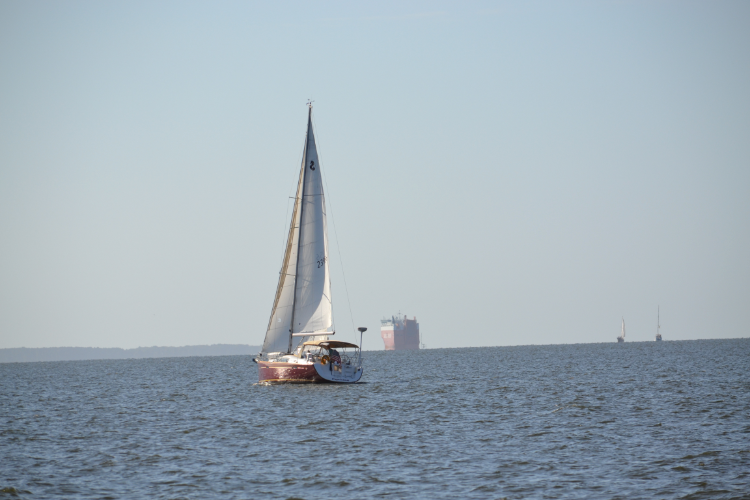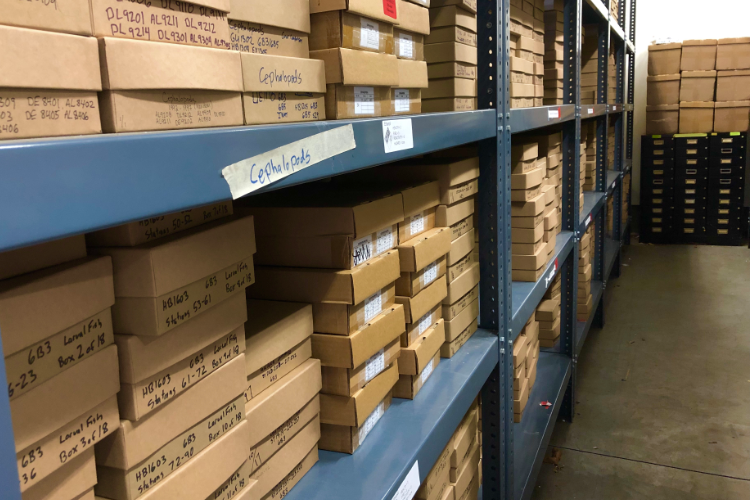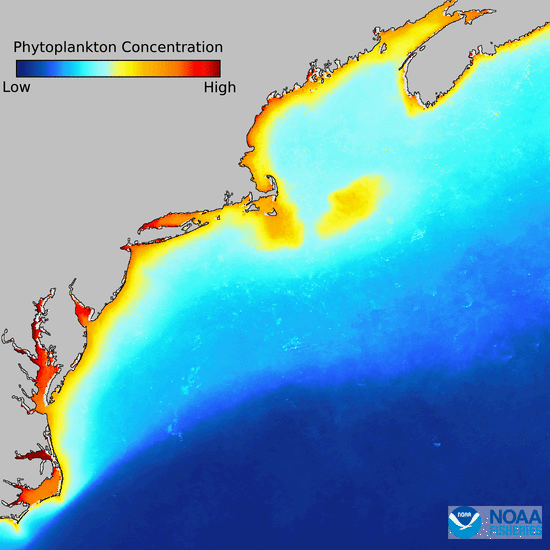Narragansett Lab Current Research and Features
Research at our Narragansett Laboratory covers a wide range of topics, making us a regional focal point for incorporating climate information into fisheries and endangered species assessments.
The Northeast Fisheries Science Center's Narragansett Laboratory hosts a widely diverse group of research programs.
Shark Tagging

Our Apex Predator Program initiated and maintains the longest continuous shark tagging program in the world.
This program engages thousands of recreational and commercial fishermen, conducts long term fishery independent surveys of large coastal sharks and shark nursery grounds, and conducts shark life history research all of which are essential for stock assessment and management.
For more information, visit our shark pages
Cooperative Research

Our Cooperative Research Branch collaborates with the fishing industry to conduct research that improves understanding of fisheries resources, the ocean ecosystem, and the businesses that rely upon it.
For more information, visit our Cooperative Research page.
Ecosystem Monitoring

Our Oceanography Branch runs the Ecosystem Monitoring (EcoMon) surveys. These surveys monitor oceanographic conditions and the distribution and abundance of fish larvae, fish eggs, and zooplankton across the Northeast U.S. continental shelf, from North Carolina to the Gulf of Maine.
While we've made some changes to the sampling program over time, we have sampled this area with the same general methods used by EcoMon and previous Center surveys since the 1970s.
Zooplankton and ichthyoplankton abundance and distribution in the North Atlantic collected by the EcoMon Program and its predecessors can be accessed at the National Centers for Environmental Information database.
For more information, visit our Oceanography Branch
Habitat Restoration

The Greater Atlantic Region’s Restoration Center addresses fishery habitat restoration through its Damage Assessment, Remediation and Restoration Program and Community-Based Restoration Program. These programs use projects like dam removal to benefit river herring and other migratory fish and salt marsh restoration, which both rehabilitates habitats for many commercial and recreationally-important fisheries and increases resiliency to storms for local coastal communities.
For more information, visit the Habitat Restoration Center page
Office of Coast Survey

NOAA Coast Survey’s navigation managers are stationed strategically in port areas along U.S. coasts and Great Lakes and work directly with pilots, mariners, port authorities, and recreational boaters. They are the Coast Survey’s eyes and ears, helping to identify navigational challenges facing the marine transportation system and providing resources and services that promote safe, efficient navigation. They are the vital link between Coast Survey’s stakeholders and our technical experts, and provide a conduit for gathering requirements for emerging survey or charting requests and for developing new products and services.
Navigation managers also lend their expertise prior to, during, and after emergencies. They regularly participate in disaster preparedness exercises and are vital to the coordination of emergency response efforts.
For more information, visit the Office of Coast Survey page
Ocean Acidification Monitoring

Increases in atmospheric carbon dioxide concentrations have occurred since the start of the industrial revolution. Ocean acidification is one result of this increase.
The oceans absorb carbon dioxide, which forms an acid resulting in lower pH or increased acidity. Increased acidity affects sensitive marine organisms such as shellfish and is a major concern for the sustainability of fisheries.
Our Oceanography Branch monitors ocean acidification on the Northeast U.S. continental shelf during our EcoMon cruises to understand potential impacts on fisheries and ecosystems. The NOAA Ocean Acidification Program funds this work, and the data is available online.
For more information, visit our Oceanography page
Plankton Archive

The Narragansett Lab houses one of the largest plankton archives in the U.S., which includes over 40 years of samples of zooplankton, larval fish, fish eggs, and cephalopods from the Northeast U.S. Shelf and surrounding areas.
For more information, visit our Oceanography page
Protected Species

Our Protected Species staff mainly conduct research on whale, dolphin, seal, seabird, and marine turtle species that live or migrate off the coast of the northeastern U.S. Research areas include distribution, ecological relationships, and human interactions, as mandated under the Marine Mammal Protection Act, the Endangered Species Act, and the Magnuson-Stevens Act.
For more information, visit our Protected Species page
Satellite Oceanography

Our Ecosystem Dynamics and Assessments researchers use ocean color and sea surface temperature remote sensing data from satellites to monitor changes in phytoplankton, primary productivity, sea surface temperature and frontal features in the Northeast U.S. continental shelf. We use these data to study potential impacts to ecosystem productivity, habitat suitability, and fisheries to support ecosystem based fisheries management in the Northeast United States.
For more information, visit our Ecosystem Dynamics and Assessment page
Social Sciences

Our social scientists conduct applied economic and sociocultural research on the use and management of commercial and recreational fisheries, protected species resources, and marine ecosystems. Through this work, we seek to increase the net benefits derived by the nation from its regional endowment of renewable marine resources.
For more information, visit our Social Sciences Branch page